case studies
Elizabeth Street catchment integrated water cycle management plan
Integrated Water Cycle Management Plan
Contact
Insight:
Strategically implementing storage and permeable surfaces to mitigate flood risks
Project description
The Elizabeth Street Catchment Integrated Water Cycle Management (IWCM) Plan aims to mitigate the extreme flood risks present in the 308-hectare Elizabeth Street Catchment. The plan includes a suite of targets, projects and initiatives to be implemented over a five-year period. These actions will enable the City of Melbourne to reduce its flood risk and access alternative water sources for the sustainable irrigation of parks, open spaces, and street trees.
The catchment sits entirely within the municipality of Melbourne. It starts at College Crescent in Carlton and finishes where the Elizabeth Street drain joins the Yarra River below Flinders Street Station.
Current conditions compared with the preferred outcome with integrated water management
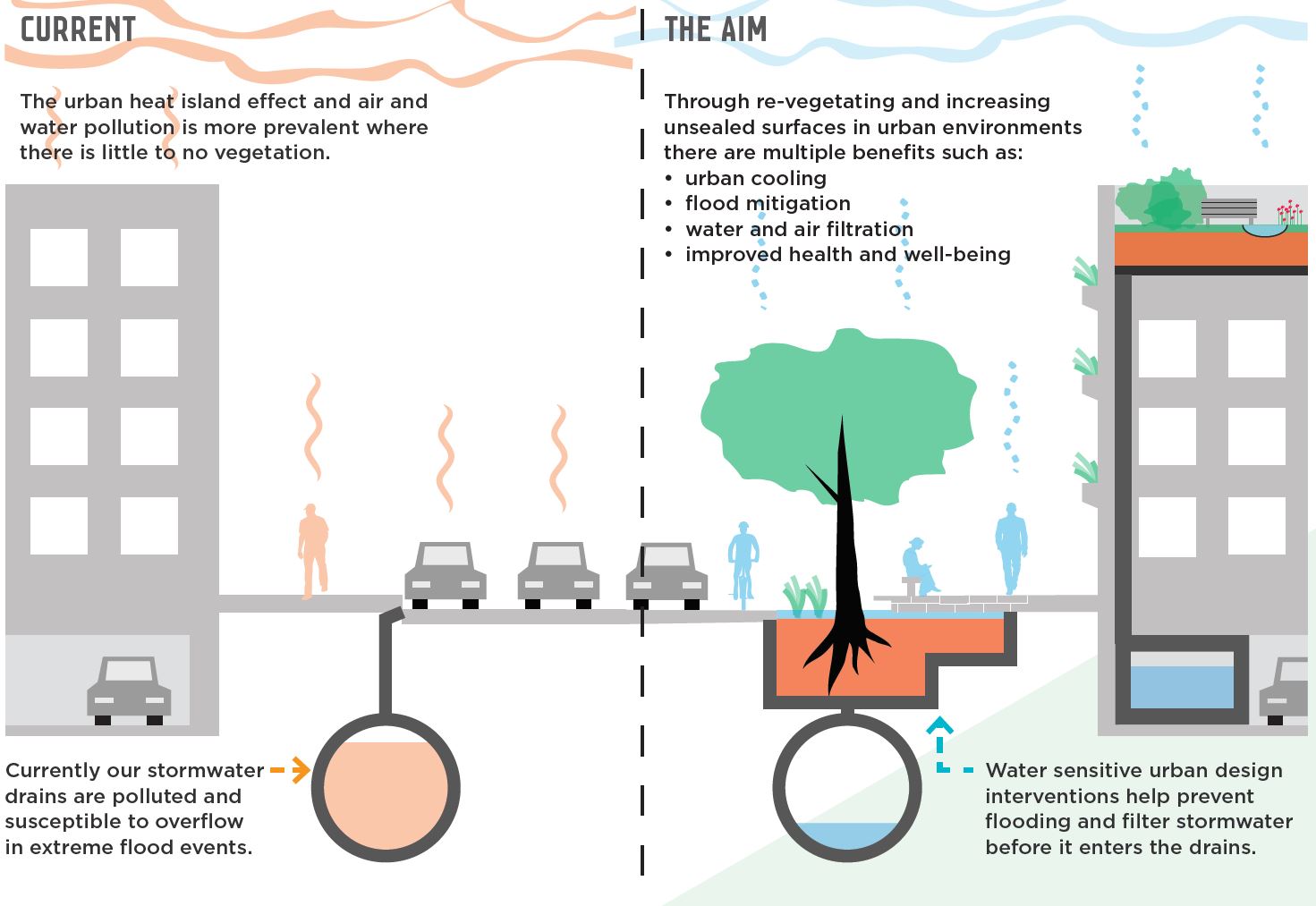
The drivers
Alleviate flood risks of a highly constrained urban environment
- Reduce flood risk: The Elizabeth Street Catchment is categorised by Melbourne Water as being at Extreme Flood Risk – the highest level. The plan aims to reduce this flood risk from ‘extreme’ to ‘high’.
- Develop alternative water supplies: To irrigate the municipality’s existing and future parks, gardens, trees and open spaces.
The innovations
Utilising stormwater harvesting as a tool for mitigating floods
- Integrated water cycle management: The plan involves all the elements of the water cycle that the City of Melbourne can influence – water consumption, rainwater, stormwater, wastewater and groundwater management.
- Diverse solutions: A mixture of innovative interventions at a catchment scale were investigated for implementation. Interventions that acted to reduce runoff and downstream flood risk included permeable pavements, raingarden tree pits and stormwater harvesting using large tank storages. Green roofs were also explored as a method of reducing stormwater runoff.
- Top of catchment: The Carlton Squares, Royal Exhibition Building / Melbourne Museum, and Queen Victoria Market stormwater harvesting systems are key projects that will help to hold water in the top of the catchment and reduce flood risk at the bottom of the catchment.
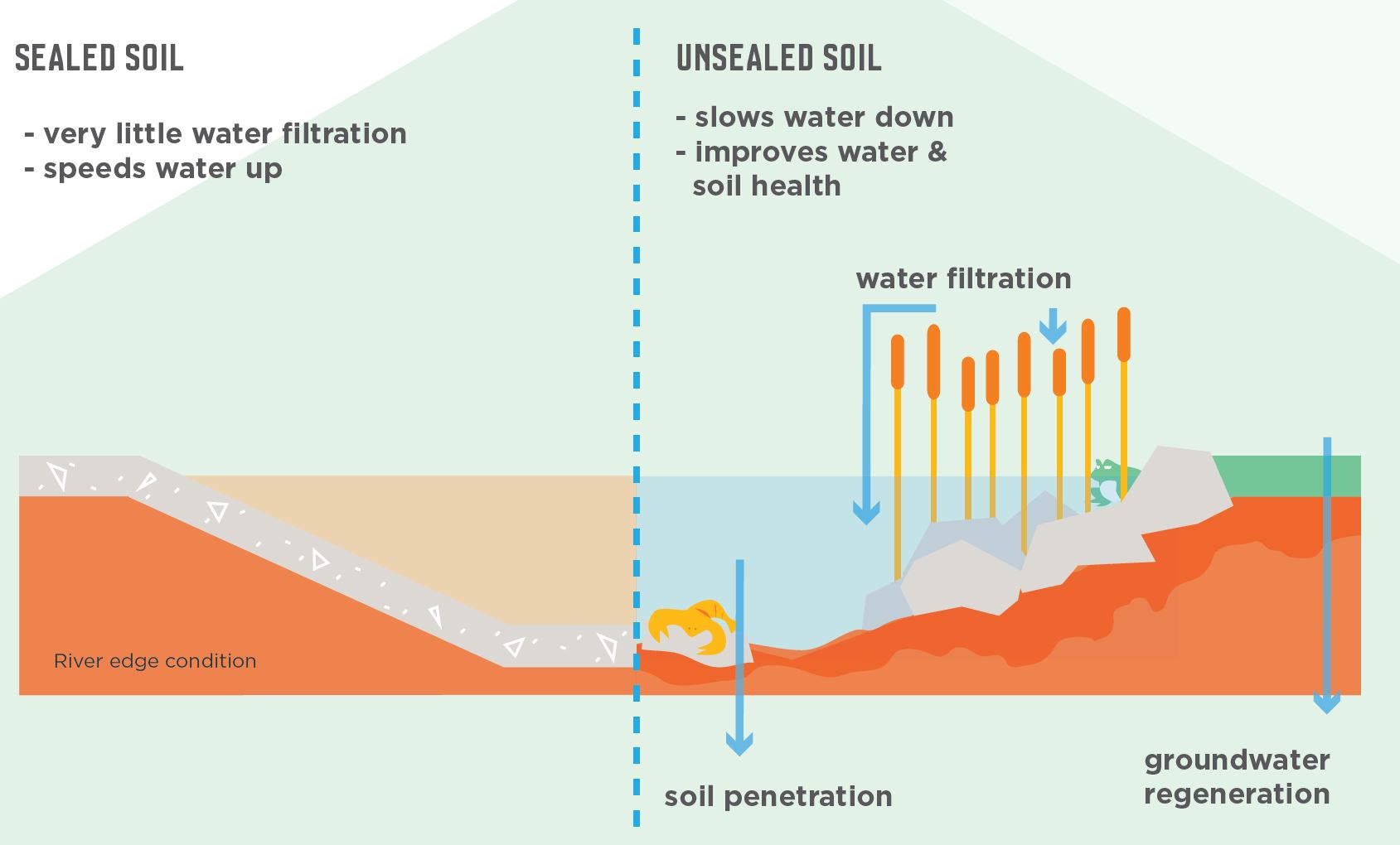
The lessons
- Recognise complexity: Complex problems require complex solutions, and patience and expertise are vital to develop them.
- Divide and conquer: Staging catchment scale plans and projects into manageable sections can be an effective method for achieving ambitious objectives.
- Identify the weakest link: Modelling the catchment’s drainage capacity identified that significant improvements could be achieved by increasing the pipe sizes in two key locations. This was an effective way for identifying drainage bottlenecks.
- Mimic nature: Increasing surface permeability can reduce hydraulic stress on drains and improve the replenishment of groundwater.
- Nuisance to resource: Stormwater harvesting can be used as a tool for addressing local drought and flood risks.
- Top of catchment: Increasing permeability and stormwater harvesting at the top of a catchment delivers greatest return for alleviating flood risks.
- Effective collaboration: Establishing a reference group that represents all internal and external stakeholders is an effective method for collaborating across a large area with a variety of land uses, owners and stakeholders.
- Hitch-hike opportunities: Timing projects with other works can be an effective way to explore additional possibilities and minimise disruption and construction costs.
Transferability
The initiatives included in the plan are relevant and transferable to other urban areas with high imperviousness in the upper catchment and downstream flood risk.
Project stats
Location
Melbourne, VIC, Australia
Participants
Broader community and the business sector
Awards
2015 Stormwater Victoria Excellence Award for Strategic and Master Planning
Topics
Additional information
Contact
The outcomes
 Cities providing ecosystem services
Cities providing ecosystem services

- Reduce flood risks: Mimic the natural water cycle by retaining more rainwater in the upper section of the catchment and reducing stormwater runoff.
- Improve vegetation health: Through irrigation from alternative water sources
- Thermal comfort: Passive irrigation contributes to the target to increase canopy cover to 40% on public land across the catchment by 2040.
- Increase soil moisture: The plan aims to have 40% of the Elizabeth Street Catchment’s soil surface unsealed by 2030.
- Healthy waterways and bay: The initiatives reduce stormwater volumes entering the waterway and its associated impacts.
 Cities as water supply catchments
Cities as water supply catchments

- City as a catchment: The solutions harness large impervious surfaces in urban environments to generate stormwater as a local water supply. City of Melbourne has a target for 50% of all council water use to be sourced from alternative water sources by 2030.
- Passive irrigation: Direct stormwater flows into streetscape vegetation to supplement irrigation.
 Cities comprising water sensitive communities
Cities comprising water sensitive communities

- Informed and supportive community: Community engagement programs build confidence and support of stormwater harvesting schemes to supply non-potable demands (i.e. irrigation and toilet flushing).
- Public signage: Signage is included in key infrastructure associated with the stormwater harvesting scheme to inform residents and visitors.
Business Case
| Costs | Benefits |
|
|
Interested in this solution?
We partner with small and large companies, government and industry in Australia and around the world.
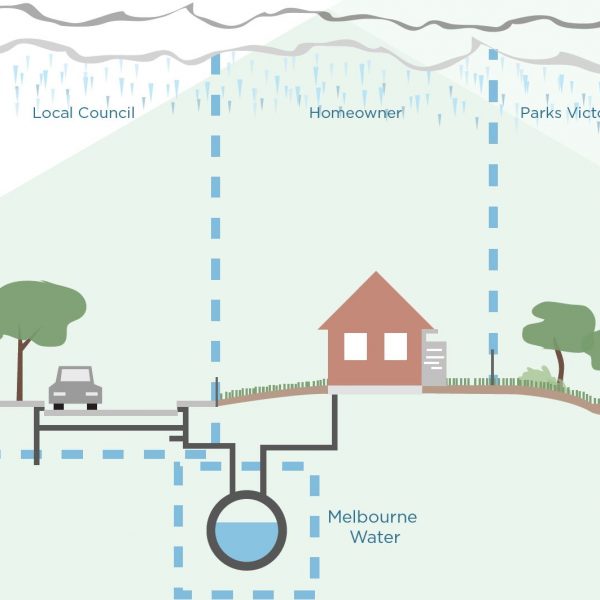
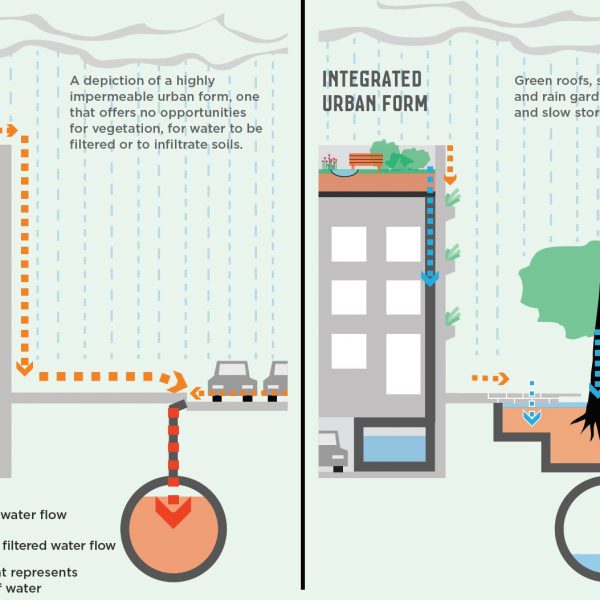
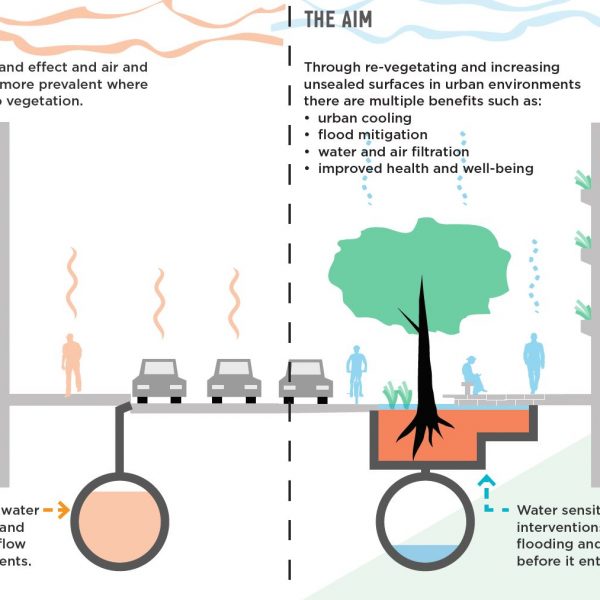
Comments